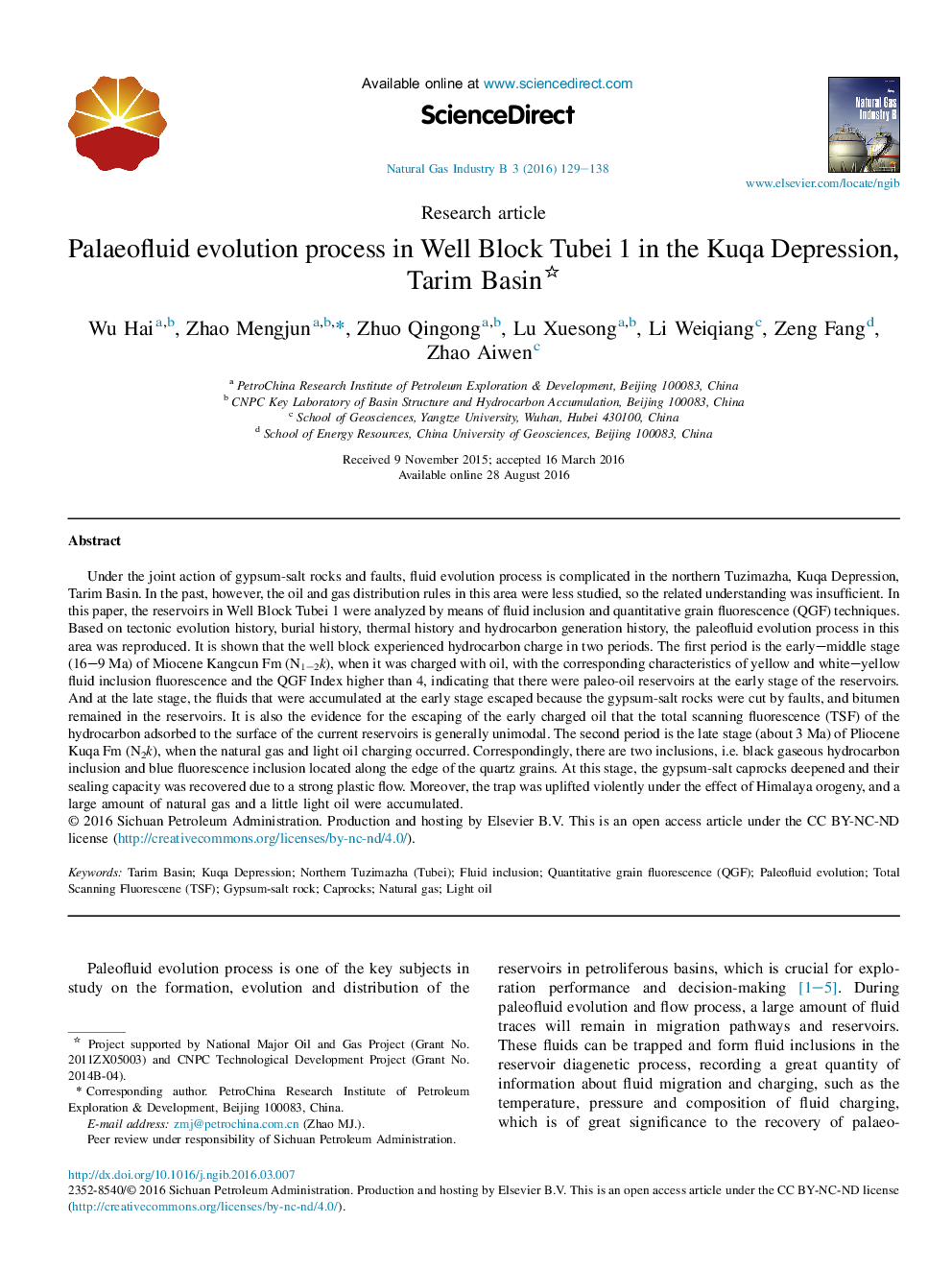| کد مقاله | کد نشریه | سال انتشار | مقاله انگلیسی | نسخه تمام متن |
|---|---|---|---|---|
| 8110111 | 1522267 | 2016 | 10 صفحه PDF | دانلود رایگان |
عنوان انگلیسی مقاله ISI
Palaeofluid evolution process in Well Block Tubei 1 in the Kuqa Depression, Tarim Basin
دانلود مقاله + سفارش ترجمه
دانلود مقاله ISI انگلیسی
رایگان برای ایرانیان
کلمات کلیدی
موضوعات مرتبط
مهندسی و علوم پایه
مهندسی انرژی
مهندسی انرژی و فناوری های برق
پیش نمایش صفحه اول مقاله

چکیده انگلیسی
Under the joint action of gypsum-salt rocks and faults, fluid evolution process is complicated in the northern Tuzimazha, Kuqa Depression, Tarim Basin. In the past, however, the oil and gas distribution rules in this area were less studied, so the related understanding was insufficient. In this paper, the reservoirs in Well Block Tubei 1 were analyzed by means of fluid inclusion and quantitative grain fluorescence (QGF) techniques. Based on tectonic evolution history, burial history, thermal history and hydrocarbon generation history, the paleofluid evolution process in this area was reproduced. It is shown that the well block experienced hydrocarbon charge in two periods. The first period is the early-middle stage (16-9 Ma) of Miocene Kangcun Fm (N1-2k), when it was charged with oil, with the corresponding characteristics of yellow and white-yellow fluid inclusion fluorescence and the QGF Index higher than 4, indicating that there were paleo-oil reservoirs at the early stage of the reservoirs. And at the late stage, the fluids that were accumulated at the early stage escaped because the gypsum-salt rocks were cut by faults, and bitumen remained in the reservoirs. It is also the evidence for the escaping of the early charged oil that the total scanning fluorescence (TSF) of the hydrocarbon adsorbed to the surface of the current reservoirs is generally unimodal. The second period is the late stage (about 3 Ma) of Pliocene Kuqa Fm (N2k), when the natural gas and light oil charging occurred. Correspondingly, there are two inclusions, i.e. black gaseous hydrocarbon inclusion and blue fluorescence inclusion located along the edge of the quartz grains. At this stage, the gypsum-salt caprocks deepened and their sealing capacity was recovered due to a strong plastic flow. Moreover, the trap was uplifted violently under the effect of Himalaya orogeny, and a large amount of natural gas and a little light oil were accumulated.
ناشر
Database: Elsevier - ScienceDirect (ساینس دایرکت)
Journal: Natural Gas Industry B - Volume 3, Issue 2, March 2016, Pages 129-138
Journal: Natural Gas Industry B - Volume 3, Issue 2, March 2016, Pages 129-138
نویسندگان
Hai Wu, Mengjun Zhao, Qingong Zhuo, Xuesong Lu, Weiqiang Li, Fang Zeng, Aiwen Zhao,